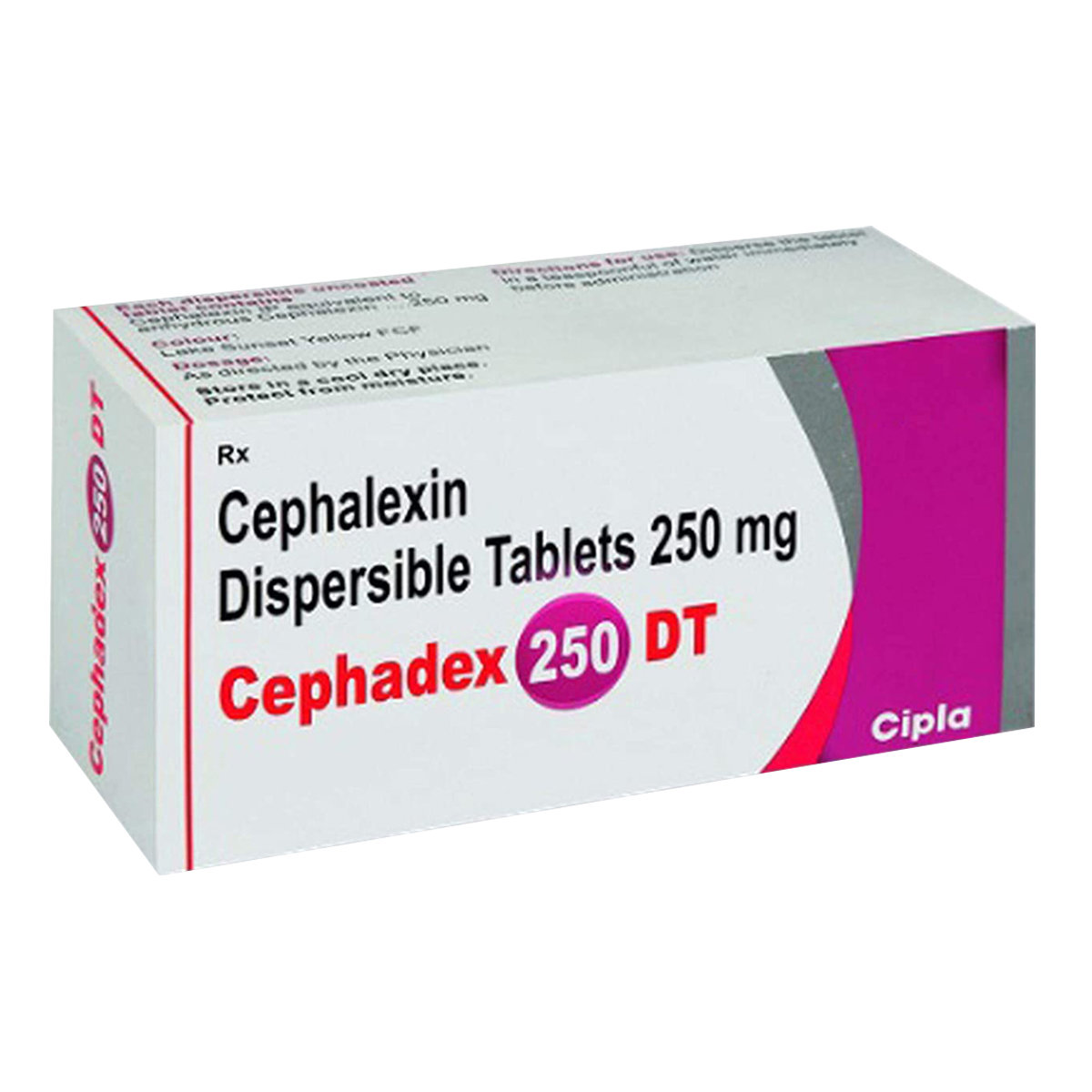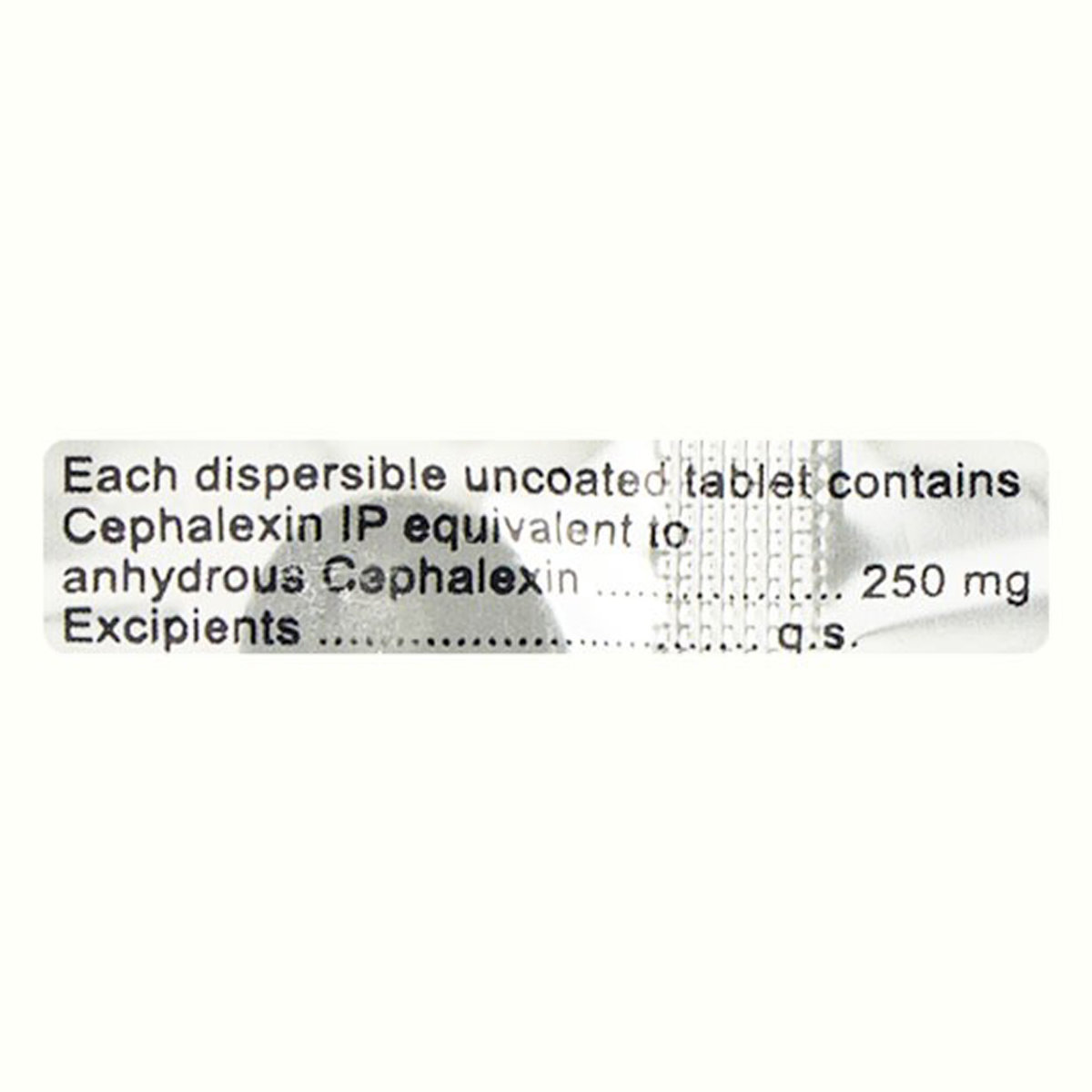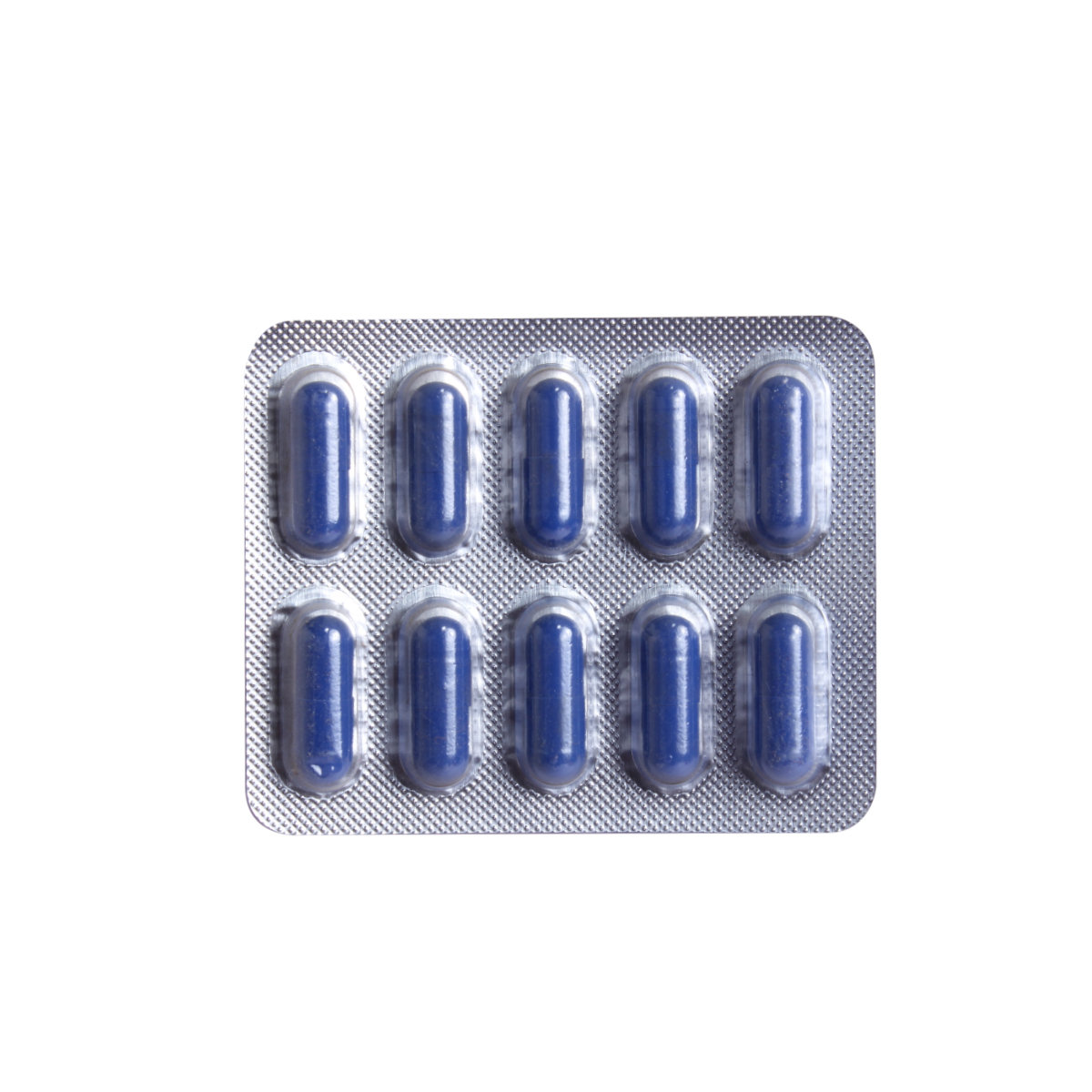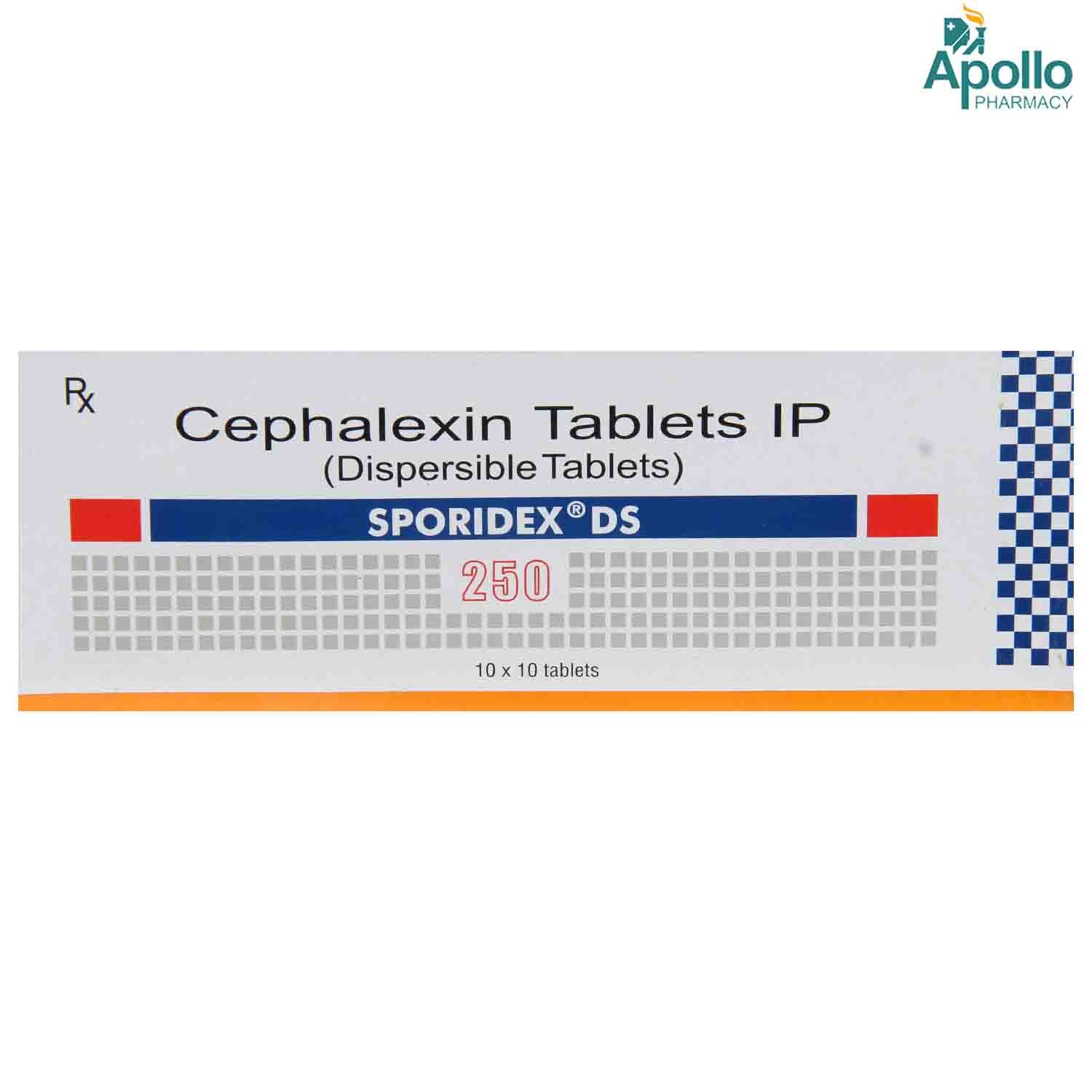Cephadex DT 250 Tablet



MRP ₹167.5
(Inclusive of all Taxes)
₹25.1 Cashback (15%)
know your delivery time
Provide Delivery Location
Composition :
Manufacturer/Marketer :
Consume Type :
Expires on or after :
Return Policy :

Secure Payment

Trusted by 8 Crore Indians

Genuine Products
Therapeutic Class
Country of origin
Manufacturer/Marketer address
Author Details
We provide you with authentic, trustworthy and relevant information
Disclaimer
Alcohol
Safe if prescribed
Avoid or limit alcohol consumption while taking Cephadex DT 250 Tablet .
Pregnancy
Consult your doctor
Cephadex DT 250 Tablet belongs to pregnancy category B. Please consult your doctor if you are pregnant, your doctor will prescribe Cephadex DT 250 Tablet only if the benefits outweigh the risks.
Breast Feeding
Consult your doctor
Cephadex DT 250 Tablet passes into breast milk. Please consult your doctor if you are breastfeeding, your doctor will prescribe Cephadex DT 250 Tablet only if the benefits outweigh the risks.
Driving
Safe if prescribed
Cephadex DT 250 Tablet does not affect your ability to drive or handle machinery.
Liver
Consult your doctor
Please consult your doctor before taking Cephadex DT 250 Tablet if you have liver impairment/liver disease.
Kidney
Consult your doctor
Dose adjustment may be needed. Please consult your doctor if you have any concerns regarding this or if you have kidney impairment/kidney disease before taking Cephadex DT 250 Tablet .
Children
Safe if prescribed
Cephadex DT 250 Tablet is safe for children above 5years if prescribed by a doctor. The dose and duration may vary depending upon the child’s weight and severity of the infection.
Product Substitutes
Reference
- https://www.medicines.org.uk/emc/files/pil.4328.pdf
- http://mri.cts-mrp.eu/download/NL_H_2523_001_FinalPI_2of3.pdf
- https://www.nhs.uk/medicines/cefalexin/
- https://www.drugs.com/cephalexin.html
- https://www.hpra.ie/img/uploaded/swedocuments/2134908.PPA0465_010_003.2ffa7430-a210-4a95-8c33-4562428247a2.000001Product%20Leaflet%20Approved.131105.pdf
About Cephadex DT 250 Tablet
Cephadex DT 250 Tablet belongs to the group of antibiotics called cephalosporin used to treat various bacterial infections of the nose, lungs, ear, bones, joints, skin, urinary tract, prostate gland, and reproductive system. Besides this, Cephadex DT 250 Tablet is also used to treat dental infections. Bacterial infections are caused due to the multiplication of harmful bacteria inside or on the body. Infectious or harmful bacteria can make you sick and reproduce quickly in your body. These harmful bacteria produce chemicals known as toxins, which can damage tissue and make you sick. Cephadex DT 250 Tablet does not work against infections caused by the virus, including cold and flu.
Cephadex DT 250 Tablet is bactericidal in nature. Cephadex DT 250 Tablet works by blocking enzymes responsible for making peptidoglycan, an important component of the bacterial cell wall. Thereby, kills the bacteria and helps in treating and preventing the spread of infections.
The dose and duration of Cephadex DT 250 Tablet can vary depending upon your condition and the severity of the infection. Also, it is recommended to complete the course of medicine even if you feel better as it is an antibiotic. Leaving it in between may lead to even severe infection that will, in fact, stop responding to the antibiotic (antibiotic resistance). In some cases, you may experience certain common side-effects such as diarrhea, nausea, vomiting, indigestion, stomach pain, and skin rashes. Most of these side effects do not require medical attention and will resolve gradually over time. However, you are advised to talk to your doctor if you experience these side effects persistently.
Before starting Cephadex DT 250 Tablet , please inform your doctor if you have any allergy (against any antibiotic), kidney or liver problems. Do not take Cephadex DT 250 Tablet on your own as self-medication may lead to antibiotic resistance in which antibiotics fail to act against specific bacterial infections. Avoid taking Cephadex DT 250 Tablet if you are pregnant or breastfeeding unless prescribed by a doctor. Cephadex DT 250 Tablet should not be given to children below 5years. Cephadex DT 250 Tablet may affect certain laboratory test results such as blood tests for liver function, glucose test, and coombs test. Inform the person doing the tests that you are taking Cephadex DT 250 Tablet .
Uses of Cephadex DT 250 Tablet
Medicinal Benefits Mweb
Key Benefits
Cephadex DT 250 Tablet belongs to the group of antibiotics called cephalosporin used to treat various bacterial infections of the nose, lungs, ear, bones, joints, skin, urinary tract, prostate gland, and reproductive system. Cephadex DT 250 Tablet is bactericidal in nature. Cephadex DT 250 Tablet works by blocking the activity of enzymes that are responsible for making peptidoglycan, an important component of the bacterial cell wall. Thereby, kills the bacteria and helps in treating and preventing the spread of infections. Cephadex DT 250 Tablet is a broad-spectrum antibiotic that is effective against a wide range of bacteria such as gram-positive staphylococci and streptococci bacteria, including susceptible isolates of Staphylococcus aureus, Streptococcus pneumonia, S. pyrogens, Haemophilus influenzae, Klebsiella pneumoniae, Moraxella catarrhalis, and Proteus mirabilis.
Directions for Use
Side Effects of Cephadex DT 250 Tablet
- Diarrhoea
- Nausea
- Vomiting
- Indigestion
- Stomach pain
- Skin rashes
Drug Warnings
Do not take Cephadex DT 250 Tablet if you have porphyria (hereditary metabolic disorder). Before starting Cephadex DT 250 Tablet , please inform your doctor if you have any allergy (against any antibiotic), kidney or liver problems. Consult your doctor if you experience skin rash or prolonged, significant diarrhea with abdominal pains. Talk to your doctor before taking Cephadex DT 250 Tablet if you have/had inflammation of the intestine. Long-term usage of Cephadex DT 250 Tablet may lead to interaction with resistant bacteria and fungi. Avoid taking Cephadex DT 250 Tablet if you are pregnant or breastfeeding unless prescribed by a doctor. Cephadex DT 250 Tablet should not be given to children below 5 years.
Drug-Drug Interactions
Drug-Drug Interactions
Login/Sign Up
Taking zinc acetate with Cephadex DT 250 Tablet can decrease the blood levels and also effects of Cephadex DT 250 Tablet.
How to manage the interaction:
There may be a possibility of interaction between Zinc acetate and Cephadex DT 250 Tablet, but it can be taken if prescribed by a doctor. However, consult a doctor if you experience any unusual symptoms. Do not discontinue any medications without first consulting your doctor.
Drug-Food Interactions
Drug-Food Interactions
Login/Sign Up
Drug-Diseases Interactions
Drug-Diseases Interactions
Login/Sign Up
Drug-Drug Interactions Checker List
- CAPREOMYCIN
- VANCOMYCIN
- GENTAMICIN
- NEOMYCIN
- TOBRAMYCIN
- CEFUROXIME
- AMPHOTERICIN B
- PROBENECID
- METFORMIN
- FUROSEMIDE
- BUMETANIDE
Habit Forming
Special Advise
- Cephadex DT 250 Tablet may affect certain laboratory test results such as blood tests for liver function, glucose test, and coombs test. Inform the person doing the tests that you are taking Cephadex DT 250 Tablet .
Diet & Lifestyle Advise
- Antibiotics can alter the useful bacteria in the stomach, which help indigestion. Therefore, you are advised to take foods rich in probiotics such as yogurt/curd, kefir, sauerkraut, tempeh, kimchi, miso, kombucha, buttermilk, natto, and cheese.
- Eat fibre rich food like whole grains, beans, lentils, berries, broccoli, peas, and bananas.
- Avoid foods rich in calcium, grapefruit, and grapefruit juice as they might hinder the absorption of antibiotics.
- Avoid consumption of alcohol to treat your condition effectively.
- Avoid usage of tobacco.
- To cure your condition, effectually complete the full course of Cephadex DT 250 Tablet even though you find symptomatic relief.
All Substitutes & Brand Comparisons
RX
Cephadex 250 mg Tablet 10's
Cipla Ltd
₹89
(₹8.01 per unit)
46% CHEAPERRX
Out of StockNUFEX 250MG TABLET
RPG Life Sciences Ltd
₹132.7
(₹11.94 per unit)
20% CHEAPERRX
Sporidex DS 250 Tablet 10's
Sun Pharmaceutical Industries Ltd
₹195
(₹17.55 per unit)
16% COSTLIER

Have a query?
Buy best Infections & Infestation products by
Cipla Ltd
Macleods Pharmaceuticals Ltd
Alkem Laboratories Ltd
Lupin Ltd
Abbott India Ltd
Sun Pharmaceutical Industries Ltd
Mankind Pharma Pvt Ltd
Micro Labs Ltd
Aristo Pharmaceuticals Pvt Ltd
FDC Ltd
Intas Pharmaceuticals Ltd
Glenmark Pharmaceuticals Ltd
Ipca Laboratories Ltd
Torrent Pharmaceuticals Ltd
Zydus Healthcare Ltd
Biochem Pharmaceutical Industries Ltd
Zuventus Healthcare Ltd
United Biotech Pvt Ltd
Hetero Drugs Ltd
Emcure Pharmaceuticals Ltd
Alembic Pharmaceuticals Ltd
Indoco Remedies Ltd
Fusion Health Care Pvt Ltd
Dr Reddy's Laboratories Ltd
Leeford Healthcare Ltd
Cadila Healthcare Ltd
Wockhardt Ltd
Zydus Cadila
GlaxoSmithKline Pharmaceuticals Ltd
Morepen Laboratories Ltd
Blue Cross Laboratories Pvt Ltd
Cadila Pharmaceuticals Ltd
Converge Biotech Pvt Ltd
Elder Pharmaceuticals Ltd
Hetero Healthcare Pvt Ltd
Pfizer Ltd
AAA Pharma Trade Pvt Ltd
Gufic Bioscience Ltd
Mylan Pharmaceuticals Pvt Ltd
Corona Remedies Pvt Ltd
Wallace Pharmaceuticals Pvt Ltd
Apex Laboratories Pvt Ltd
Medishri Healthcare Pvt Ltd
Akumentis Healthcare Ltd
Alniche Life Sciences Pvt Ltd
Hegde & Hegde Pharmaceutica Llp
Veritaz Healthcare Ltd
Ranbaxy Laboratories Ltd
Koye Pharmaceuticals Pvt Ltd
Shreya Life Sciences Pvt Ltd
Overseas Health Care Pvt Ltd
Biocon Ltd
Indchemie Health Specialities Pvt Ltd
Medley Pharmaceuticals Ltd
Brinton Pharmaceuticals Ltd
J B Chemicals & Pharmaceuticals Ltd
Unifaith Biotech Pvt Ltd
Ajanta Pharma Ltd
Biochemix Health Care Pvt Ltd
Natco Pharma Ltd
Samarth Life Sciences Pvt Ltd
Unichem International
Laborate Pharmaceuticals India Ltd
Unipark Biotech Pvt Ltd
Zymes Bioscience Pvt Ltd
Indiabulls Pharmaceuticals Pvt Ltd
Neon Laboratories Ltd
Vasu Organics Pvt Ltd
DR Johns Lab Pharma Pvt Ltd
East West Pharma India Pvt Ltd
La Renon Healthcare Pvt Ltd
Medgen Drugs And Laboratories Pvt Ltd
Novartis India Ltd
Canixa Life Sciences Pvt Ltd
Icarus Health Care Pvt Ltd
Lincoln Pharmaceuticals Ltd
Celon Laboratories Pvt Ltd
Concept Pharmaceuticals Ltd
Klm Laboratories Pvt Ltd
Nicholas Piramal India Ltd
Systopic Laboratories Pvt Ltd
Yuventis Pharmaceuticals
Capital Pharma
German Remedies Ltd
Pristine Pearl Pharma Pvt Ltd
Unison Pharmaceuticals Pvt Ltd
Aurz Pharmaceutical Pvt Ltd
Clover Health Care Pharma
Kepler Healthcare Pvt Ltd
Allites Life Sciences Pvt Ltd
Auspharma Pvt Ltd
Intra Life Pvt Ltd
Jolly Healthcare
Linux Laboratories Pvt Ltd
Ozone Pharmaceuticals Ltd
Cachet Pharmaceuticals Pvt Ltd
Comed Chemicals Ltd
Delcure Life Sciences Ltd
Fresenius Kabi India Pvt Ltd
Khandelwal Laboratories Pvt Ltd
Customers Also Bought






